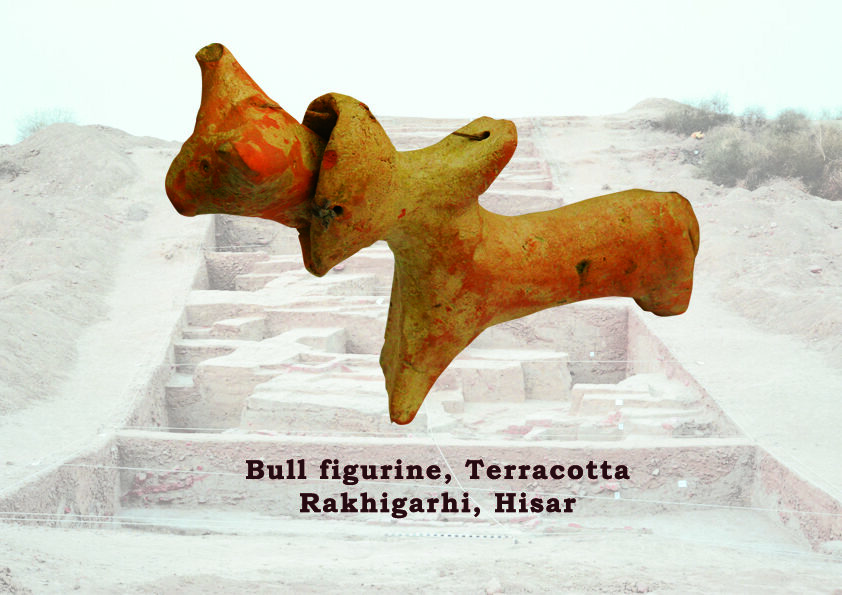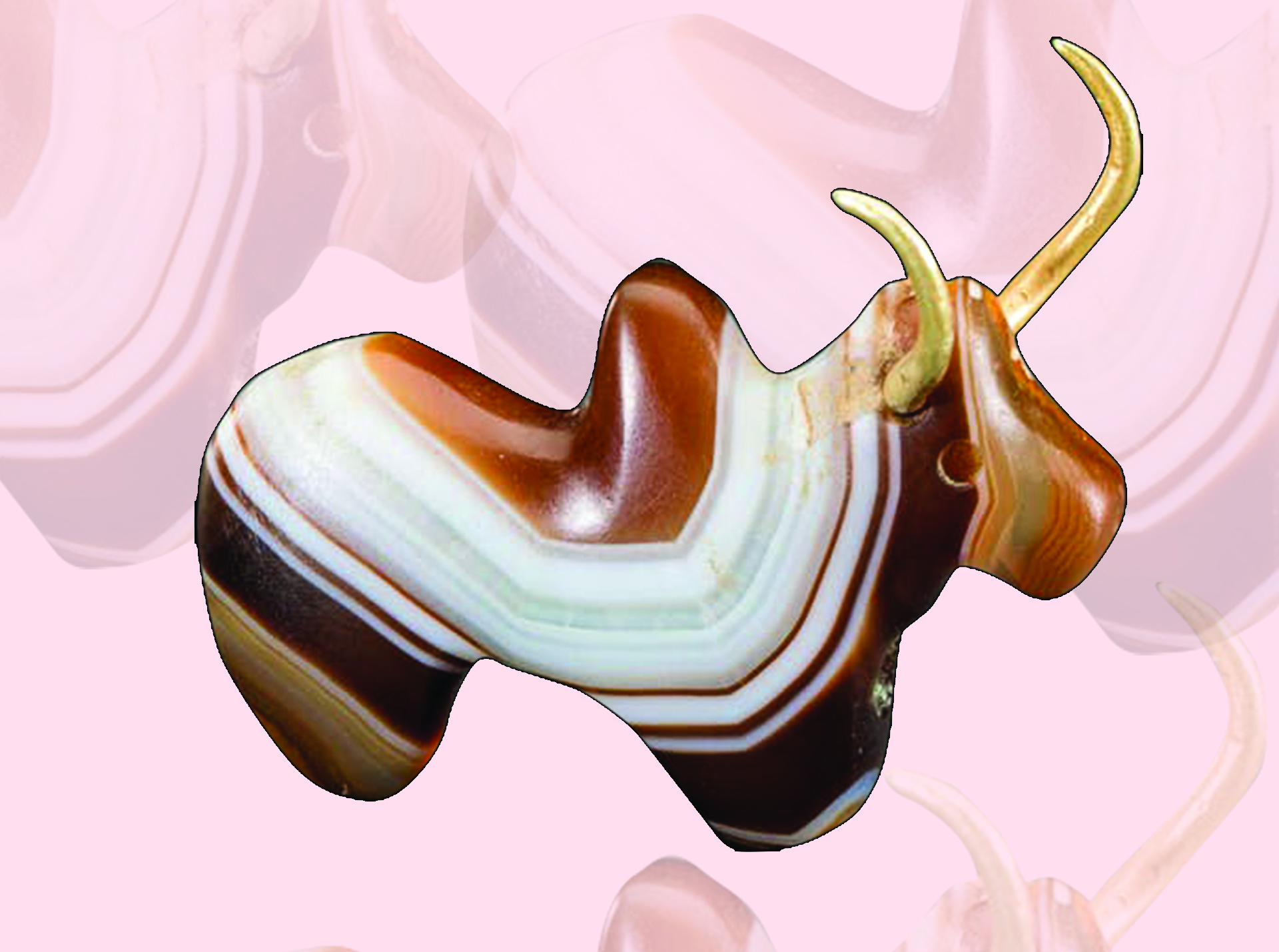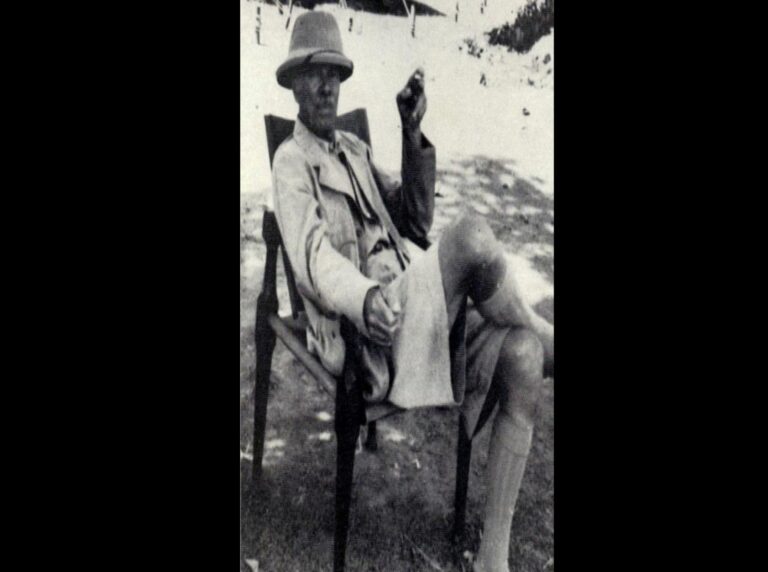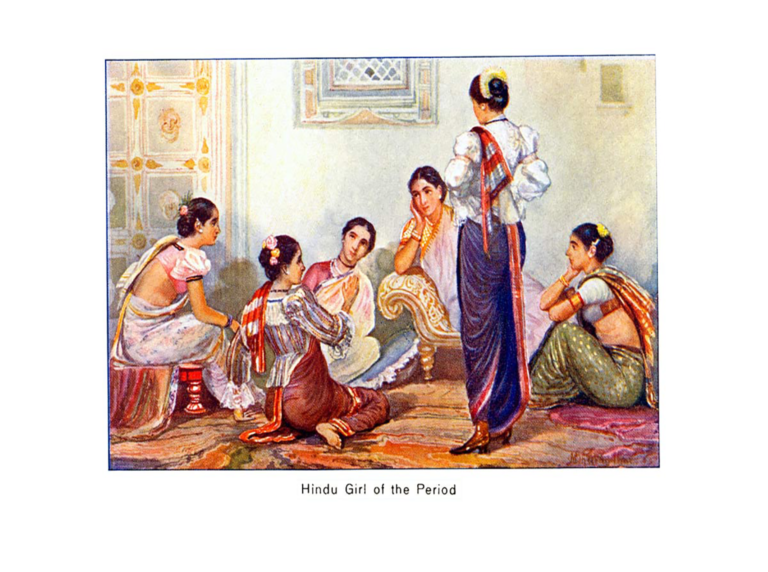Dr. Suruchika Chawla
Fauna has always fascinated artists of the world across time. The creativity of human mind knows no boundaries. One can create what one can possibly imagine and this seems true from the variation of motifs seen on artefacts. Depictions of motifs of bull as a prominent animal on archaeological material or artefacts bear testimony to the practices and ideologies of people of the past. Societies have connected with them as tangible evidences of cultural heritage and have continued those practices.
The exhibition showcases appearance of Bull as a significant motif in archaeological evidences discovered from Haryana, India. Scholars opine that the region of Haryana has been a state of inter-mingling of various peoples and races. State has evidences of antiquity of thousands of years.
Haryana, also given name as Hariyanka suggest abundance of food supply and vegetation. Haryana is blessed with extensive wealth of agriculture and motifs of bull that are both stylized and naturalistic representations, carry essence of the continuum of significance of Bull in Haryana’s culture till today.
Some of the archaeological remains in the form of figurines, seals/sealings and painting on potsherd, etc. highlighting the prominence of Bull in Harappan art, particularly discovered from different sites in Haryana can be viewed here.

The terracotta paraphernalia like these may have been attached with attires or costume which signified symbol of authority or ritual transformation of an individual. Similar masks and amulets found from other Indus Valley Civilization sites have incised patterns, holes, paintings on them. Denoted as iconographic representation possibly worn, this reveals a significant cultural and religious indication of past societies.
These attachable bull horns made of terracotta were discovered from Bhirrana (site dating back to 4000 BCE), located in Fatehabad district of Haryana. It symbolize a part of significant costume that may have had amuletic meaning.

Pottery considered as a significant marker of different cultures over time and its shapes, sizes, fabric and designs reveal symbolic functions that would have been part and parcel of lives of inhabitants of past. The pottery usually decorated with floral, faunal or geometric patterns, gave prominent ideas of the environment of its time.
This potsherd unearthed from the site of Kunal (dating back to 3100-3000 BCE), in Fatehabad district of Haryana, shows a bull with beautifully painted horns, an eye looking intensely and small ears on both sides of head below horns. The prominent hump is indicator of this motif being of a bull. Kunal archaeological site revealed sherds with horned motifs, floral designs and geometric designs. This sort of depiction was rare and unique in itself. This reveals that bull was an indispensable part of economic and social fabric of the people and was uncommon on pottery thus this depiction must have been a significant connotation.

The glyptic art of Harappan culture, seals made of various raw materials have been interpreted as symbols of script, authority, ownership, trade, religion among other meanings. The animal forms have been creatively infused with remarkable artistic skills that made the seals as symbols of knowing about culture. Carrying over 400 designs and short inscriptions amounting to thousands, make seals vital aspect of studying past.
Some seals carried composite creatures, made up of parts of different animals and plants, which perhaps had a symbolic totemic meaning behind its creation.
This seal bearing a composite bull motif has a tiger’s stripes and paws, and bear a script (symbols) on the top of animal depicted. The seal, rare and one of its kind from Haryana was found from the site of Banawali (dating back to 2200-1800 BCE) in Fatehabad district.

Terracotta figurines with movable appendages, or those making sounds or parts that were detachable, indicated the aspect of being alive or movement, in the objects shown. Whistles in form of birds made sounds like them, climbing monkey or squirrels on branch of tree, dogs with standing posture, birds with open wings, bulls with detachable heads and movable horns showed their movement and action which was infused by the craftsmen in their creations.
This bull figurine with movable head indicates movement and give a hint of its symbol depicting transport and trade processes. They must have been yoked to carts through these piercing, like the contemporary oxen have been used for these functions.

The site of Rakhigarhi is distributed over seven mounds, revealed all the defining features of Indus Valley Civilization. Considered as the largest Harappan site of Indian subcontinent, the gamut of artefacts revealed array of craftmanship. Similar looking heads of animals, with piercing were also found among others. The site is rich in archaeological data and such bull heads denote prosperous lifestyle of people who had quality time to infuse ideas into mundane looking objects.

This tiny bull carved out of banded agate stone with horns made of gold is a masterpiece of Harappan craftsmen, being one of its kind, was recovered from village Pur, Bawani Khera, Bhiwani (2000-1700 BCE). The gold horns that adorn the animal are movable and the finesse of bands over the body gives an enchanting look to the animal. This cleverly crafted artefact from a piece of stone makes it exquisite exhibit and appearance of such rare bull figurine in Haryana signifies that this was a marker of active involvement of inhabitants in International trade activities.
This was discovered with rings made of gold, beads made of semi-precious stones and other gamut of exquisite objects. This collection suggests trade links with coastal regions as the design is uncommon in Indian subcontinent.
The people in state of Haryana till present are fond and rooted to agrarian subsistence that makes Bull as marker of agriculture and breeding cultural practices in lives of people of Haryana. This cattle faring culture of Haryana, is prominent theme in fairs and festivals held across the State.
A prominent terracotta model of plough was also found from the site of Banawali. The immense variation of presence of bull motifs on archaeological evidences such as seals, pottery and figurines, which were painted, humped and humpless, or were movable objects, compliment the continuity of culture seen in the State.
Courtesy and credits to
Department of Archaeology and Museums, Haryana











